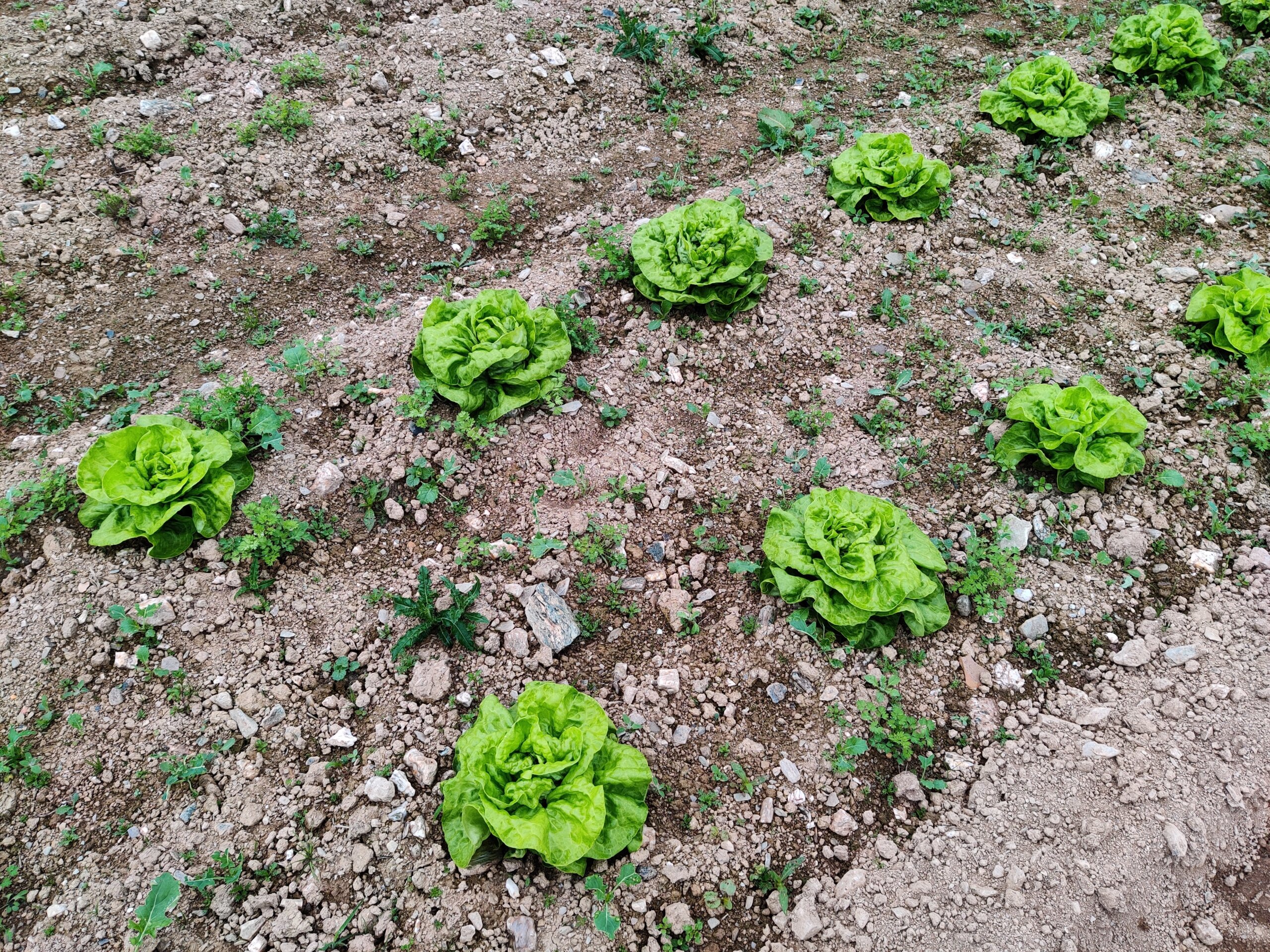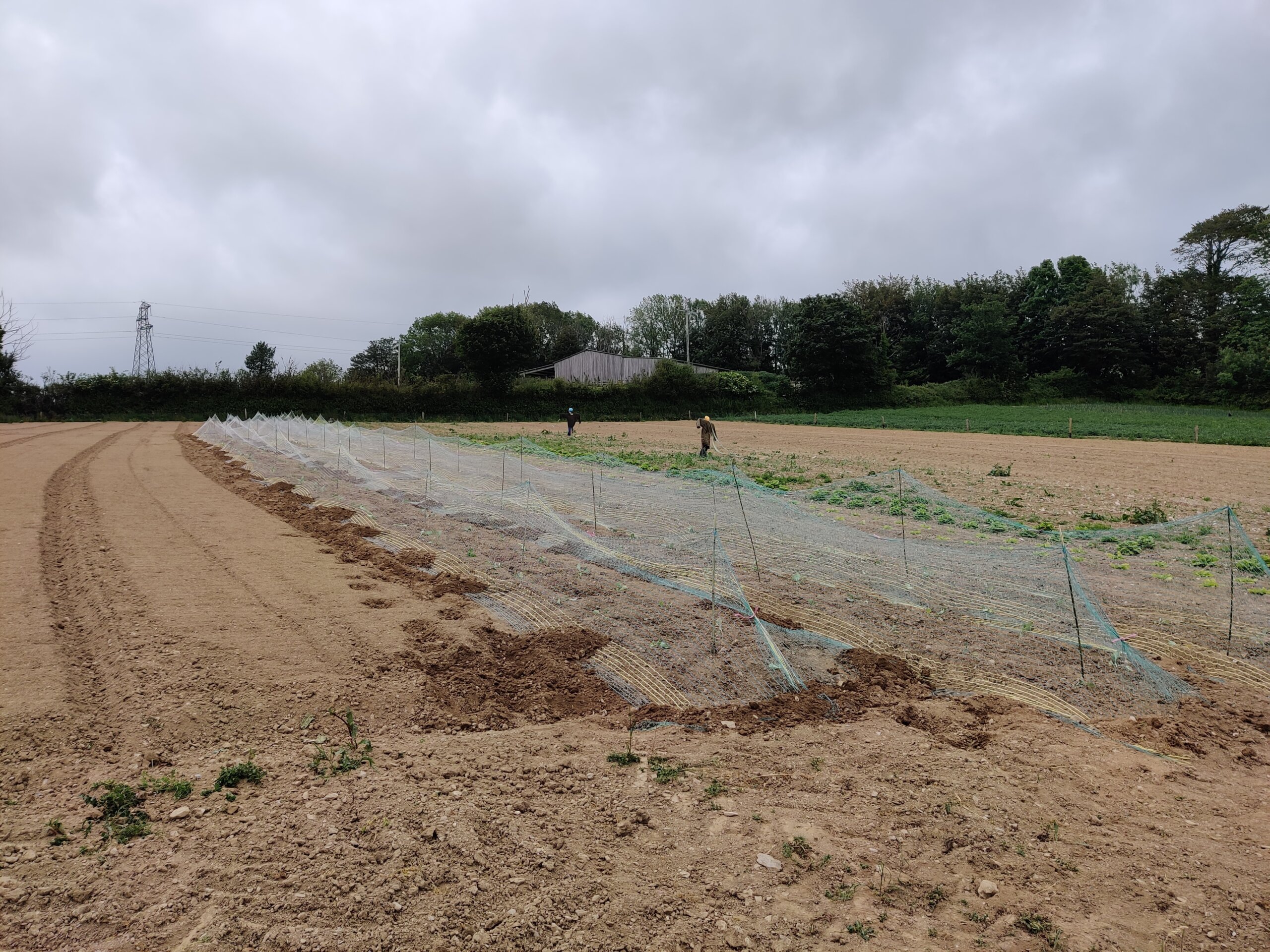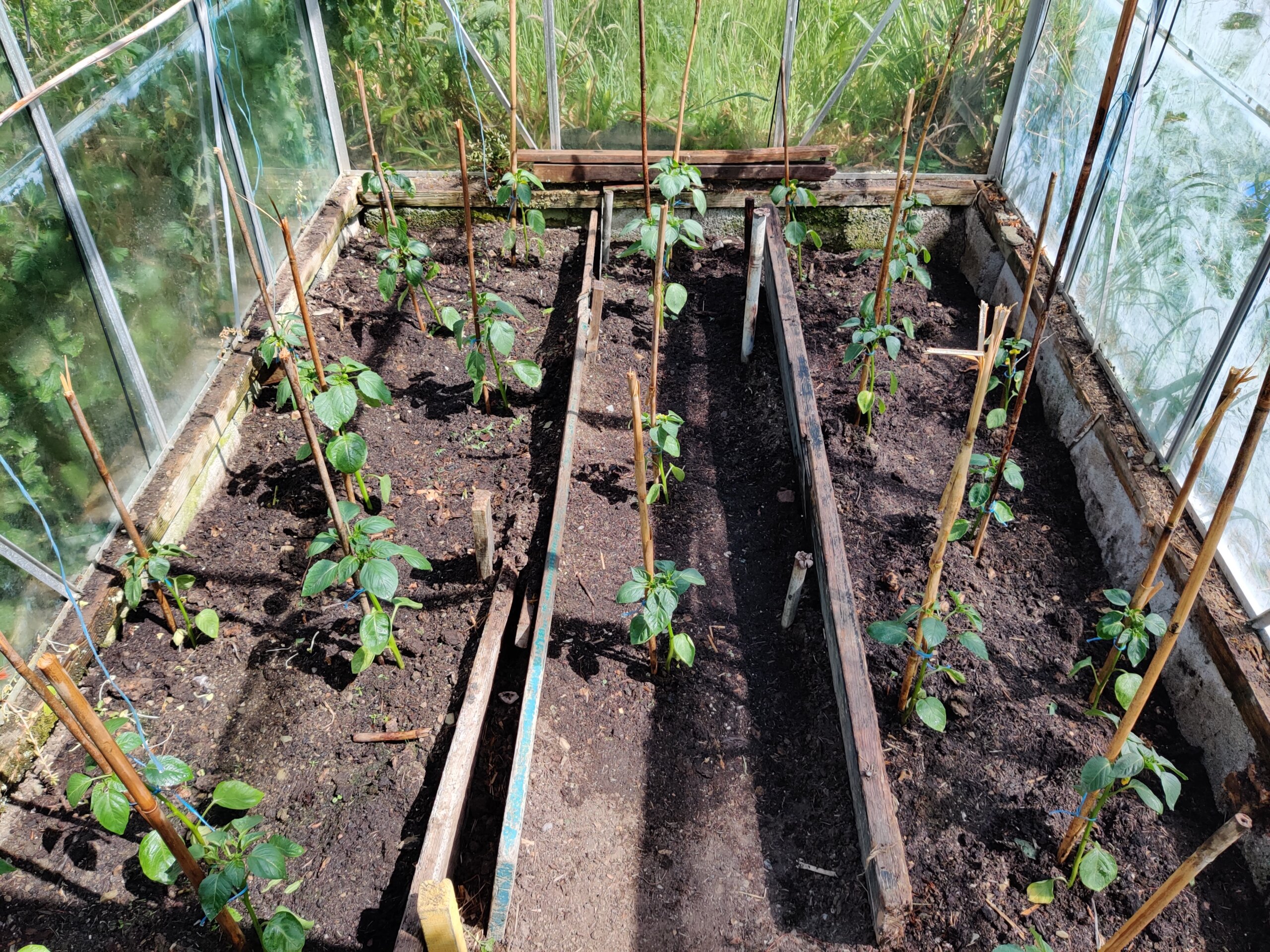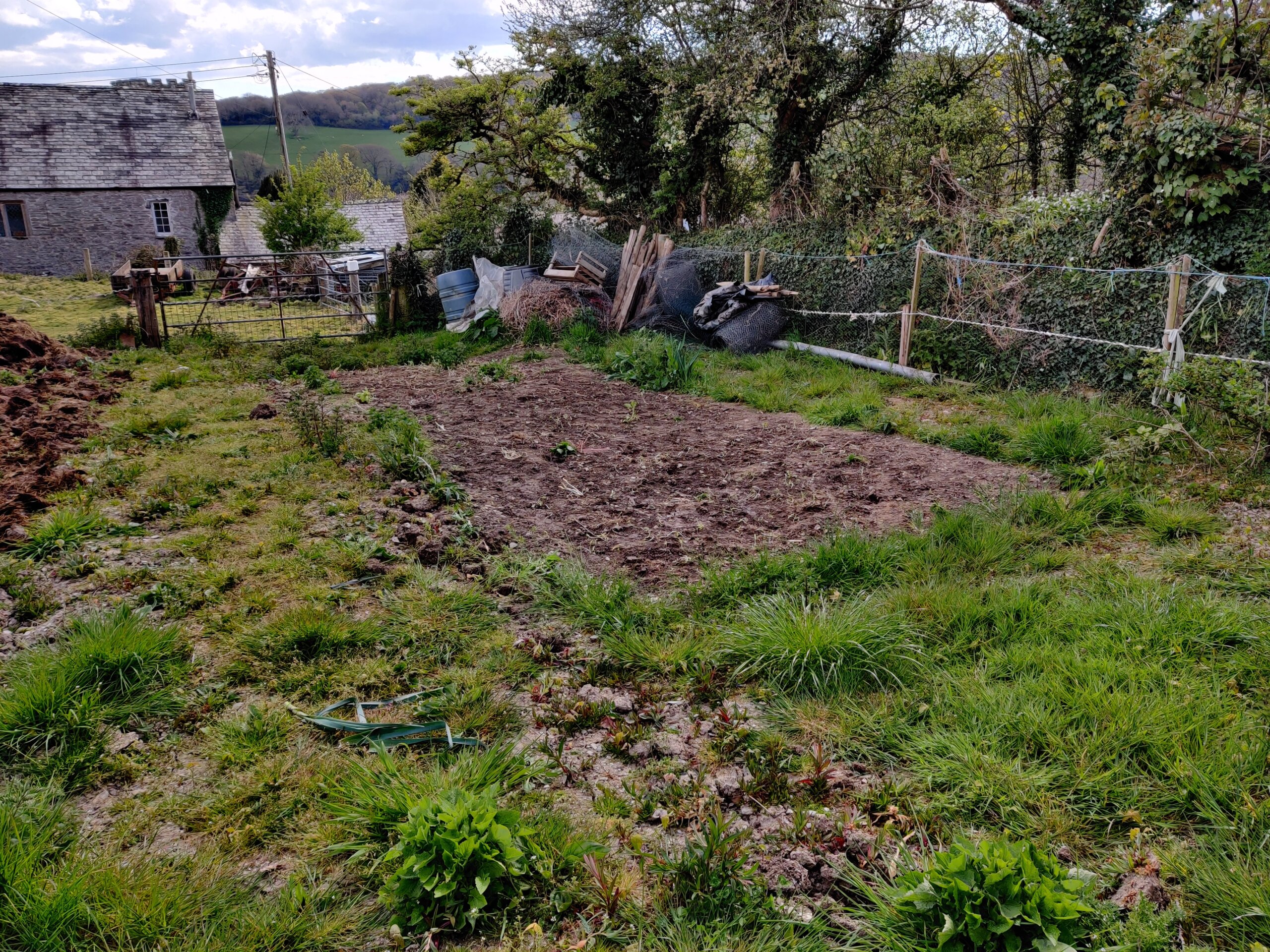I have started my journey into horticulture, giving vegetable growing a go for the first time. With my family’s support, I’ve been growing and selling my own produce and I’ve learnt more than my fair share in my first season. Here are just five things I’ve learned about vegetable growing in 2021.
Bare soil is a bad idea
Since I returned to the farm, I’ve been reading and learning as much as I can about vegetable growing . If there’s one thing I’d wish I’d read before starting this season, it would be that bare soil doesn’t work.

Where there is bare soil, weeds will attempt to grow
Essentially, if there is bare top soil and you’ve not planted anything to grow there, nature will grow something instead. At the start of the season, when I cultivated my entire plot (3.5 acres), I created a perfect environment for weeds to establish. This meant I had to re-cultivate patches to eradicate the weeds, which is not good for soil structure.
This autumn, we have sown a cover crop and will incrementally cultivate to prepare the soil as and when we need it. The benefits of cover cropping include helping soil structure, suppressing weeds and providing green manure when incorporated into the soil.
Pesky pests
We’re more than aware of the garden pests we can expect to encounter in our gardens. Mum’s vegetable growing plot is well protected by entrenched chicken wire to stop rabbits getting in. She also takes the time to sprinkle slug pellets liberally around younger plants.
We knew rabbits would be an issue before we started, so most of the field is protected with one course of chicken wire. Once in a while, one or two rabbits may find their way in, but such low numbers can’t do too much damage.

Nets set up to protect brassicas from pigeons
However I was shocked to discover that all of my first batches of cabbage, cauliflower and brussels sprouts had been eaten entirely by pigeons. For subsequent plantings, I’ve put up nets to protect the plants. The nets are taken from a roll of round bale netting and stay in place until harvest.
‘Frost-hardy’ does not mean ‘indestructible’
At the very beginning of my venture into vegetable growing, I made the mistake of thinking that because a plant is tolerant of low temperatures, it is somehow more rugged than other plants.
After seeing some early leeks struggle after transplanting, I learned that this is nonsense. If a plant is frost-hardy or winter-hardy, it can survive low temperatures. That’s it. The plant still needs to be treated with respect.
On the opposite end of the spectrum, are tomatoes pathetically delicate plants because they need higher temperatures to thrive? Of course not. A plant’s ability to tolerate lower temperatures doesn’t make it magically tough.
Greenhouses are god-like
From what I’ve read this year, some people have a balanced view on greenhouses. Whilst they provide season extension and protect plants from the elements, their lack of ventilation means disease can thrive.

Early tomatillo plants in one of my greenhouses
I’ve been fortunate to have access to three greenhouses this year (I’ll have fewer next year), and they have been a godsend for my season. Tomatoes and tomatillos have thrived in greenhouse beds and I’ve had great yields of each. Furthermore, their protection in the spring meant my early transplants were super-strong and ahead of schedule.
There comes a time in late spring where the greenhouse is too warm for most small plants, but I can’t understate how satisfied I am with how my greenhouses have done this season.
Organic vegetable growing is easier said than done
My veg is not organic and it’s not a priority for me to go organic, but reducing synthetic inputs is a worthwhile objective both environmentally and financially. Weed control has been a big challenge to my vegetable growing this year. Whilst we’ve avoided pesticides, herbicides are a part of our weed control strategy.
Currently, we’re applying a pre-emergent herbicide after cultivation, which essentially prevents weeds germinating, allowing our plants to get a head start. For some of our crops, particularly the brassicas, we apply another herbicide later if weeds are starting to get established.
In the greenhouses, I’ve had a lot of joy supressing weeds by mulching with grass cuttings. I’m hoping to scale up this practice to the outdoor vegetable garden next season. This will be an experiment, but I’m hoping the combination of pre-emergent and mulching will eliminate the need for further herbicide application.

The effects of successful mulching with a plastic sheet
Reducing inputs has clear benefits, but they should be phased out one-by-one. Completely removing all inputs at once is a recipe for disaster, so I have plenty of experimenting and learning to do in this area.
These are just five vegetable growing lessons I have learned in 2021. I’ve learned so much that I could have written this post about five wholly different topics. Fortunately, Joy Larkcom’s book on vegetable growing has come to my rescue numerous times already.
Horticulture is new to me, and every season has the potential to be better than the last, with an endless number opportunities to learn. No doubt I’ll be back here in 12 months, with five new vegetable growing lessons that seem glaringly obvious to me in hindsight.